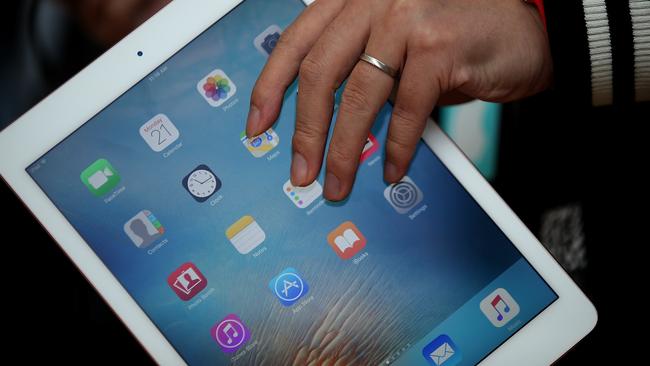Tablet sales fall as users move to premium 2-in-1 devices
Tablet sales in Australia have nosedived as users fall out of love with the Android system.

Tablet sales have fallen dramatically in Australia as users shift towards premium 2-in-1 devices, according to research.
Telsyte’s Australian Media Tablet Market Study 2016, released today, found a total of 3.1 million tablets were sold in 2015, a sharp drop of 18 per cent from 2014.
The biggest fall came from Android tablets, which experienced a 34 per cent year-on-year decline, with consumers ditching sub-premium tablets in favour of Windows devices, particularly its Surface tablets.
Windows tablet sales share almost doubled in 2015, though the rise of Windows tablets was not enough to offset the overall market decline in 2015.
In 2015, iOS accounted for 48.7 of all tablets sold in Australia, Android at 35.7 per cent and Windows 15.6 per cent.
Telsyte managing director Foad Fadaghi told The Australian the PC and tablet markets were starting to mesh, with users now opting for high-end 2-in-1 devices for work and employers themselves wanting to capitalise on the digital transformation trend.
“In 2013, shortly after the iPad arrived, there was an explosion in the budget, low-end Android devices flooding the market,” Mr Fadaghi said. “The market was inundated and for anything between $70 and $250 you could buy a very low-end Android device. A lot of people that bought Android tablets found them less useful than they would’ve thought, and a lot of those devices have since been retired.”
Mr Fadaghi said he expected the 2-in-1 tablet battle to shift this year to be between Microsoft and Apple, a rivalry that traditionally has been a feature of desktop computing.
“Unless Google has a strategy change or maybe pushes its Nexus products out sooner, this will be a battle between Microsoft and Apple,” Mr Fadaghi said. “We haven’t seen as many ‘hero’ products from Google in the last 12 months.”
The analyst pointed out that Microsoft’s Surface Book and Apple’s iPad Pro were expensive devices that nevertheless had similar functionality to laptops, and said purchasers were generally looking to these devices as career tools.
He added the Microsoft-Apple battle would largely revolve around peripherals.
“The stakes are rising in the whole computer space and this will focus around peripheral devices,” Mr Fadaghi said.
The research also found major electronics retail stores such as JB-Hi-Fi are dedicating more floor space to 2-in-1 tablets due to anticipated demand, while overall the range of tablets in stores is expected to shrink in the next six to 12 months, except for those made by Apple, Microsoft and Samsung.


